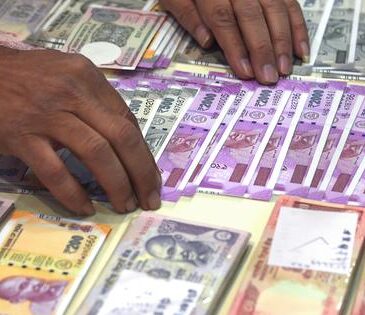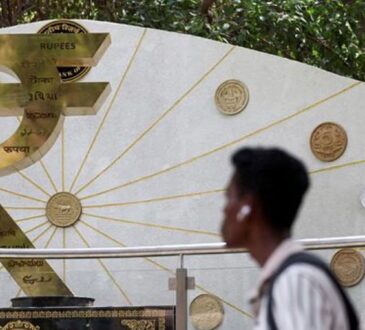Trade is structural and its implications for policy and markets alike are pervasive, especially when deficits have been persistent and accumulating for a long time.
Currencies and trade imbalances are linked. This link is even more complex and consequential when the currency is also the global reserve currency, as is the case with the US dollar.
Therefore, to understand America’s current position and predicament, and also to understand Trump’s tariff agenda, it is necessary to understand the complexities associated with global reserve currency status, its advantages and disadvantages, and why global reserve currencies cannot last forever.
A situation in which one country, China, accumulates persistent trade surpluses and another, the United States, accumulates persistent deficits is unsustainable in the long run. And so, we can say that we are at a “Bretton Woods moment” in the current circumstances.
What the US administration has signalled is that the international system no longer serves its interests, and that America cannot be expected to continue to support and finance it.
The international system that America has led since the end of World War II may no longer be viable or sustainable for the United States. We are discussing the complexities and intricacies of what may be a transitional period at this time.
Reserve ccurrencies and the ‘exorbitant privilege’
Global reserve currencies grant their issuers “exorbitant privileges,” a term coined by Valéry Giscard d’Estaing when he was finance minister of France in the early 1960s. But these come at the cost of accumulating imbalances and their consequences, which ultimately cause their collapse in one form or another.
Strictly speaking, the term reserve currency refers to a foreign currency that central banks or monetary authorities or other official institutions hold in their foreign exchange reserves. But it is more than that. It is the unit of account in global finance, since many goods around the world are priced in dollars. It is also a medium of exchange, as banks hold dollars to settle trade bills. It is also a store of value, for the accumulated surpluses in the balance of payments. International borrowing is now done in New York in dollars. The dollar finances the world on the basis of the strength of America’s financial markets.
The advantage is obvious. The United States borrows in its own currency, and central banks hold that debt on their balance sheets. That is why American debt has never been a problem to finance. Foreign central banks wanted it as reserves for their banking systems. If US debt goes up, so do the reserves of the world banking system. The threat to the dollar as a reserve currency is not so much the size of the debt, but the weaponization of it in current international rivalries.
Price to pay
But there are downsides. The increased demand for the dollar as a global reserve currency makes it permanently overvalued, which makes exports, especially manufactured goods, but also agricultural products, more expensive for those who import them. This makes a country’s agricultural and manufacturing base far less competitive. The dominance of the dollar as the world’s reserve currency explains much of the deindustrialization of the heartland of the United States, just as the dominance of the pound sterling explains the deindustrialization of the Midlands of the United Kingdom.
It is not that the rest of the world has cheated America. It is the price of the exorbitant privilege of being the issuer of the world’s reserve currency and of being able to issue staggering amounts of government debt without having to make the accompanying investments in improving the country’s economic productivity or increasing the country’s tax take.
Whatever is less economical to produce domestically is not produced and is imported instead, which means that the trade deficit continues to worsen. The other side of the coin, of course, is that every year the United States pours dollars out into the world as global reserves.
Tariffs and the underlying problem
Tariffs are a tax, mostly paid by the consumer, and when combined with some of the other things that are going on in the United States, such as immigration or DOGE-related cuts, they are contractionary. In addition, tariffs will slow global trade, which will put further contractionary pressure on the economy.
However, the tariffs do not really address the underlying problem, which is that the trade deficit is the mechanism by which dollars are injected into the global economy as global reserves. In this sense, the trade balance and the capital account are inextricably linked. If the trade deficit narrows as a result, it will also mean that there will be fewer dollars flowing into the international economy, and then there will be a lot less flowing back into the U.S. debt markets, which will affect funding and financial markets. It will also affect the global economy if the flow of dollars into the international system is suddenly reduced.
The reshoring of American industry, which is a stated goal of the Trump administration, will not happen automatically, it will take years because the underlying processes are structural. The reshoring of industry back to the United States will require the rebuilding of infrastructure, including energy infrastructure, the reorganization of supply chains, and the retraining of workers.
The Triffin dilemma
All of this is illustrated by the Triffin Dilemma, which refers to the conflict of interest that arises when a national currency, such as the US dollar, is also the global reserve currency. Since the global economy needs an adequate supply of the reserve currency, this means that the country issuing the reserve currency, the US, must run trade deficits indefinitely, with all the consequences that this entails, most notably the hollowing out of the industrial base already discussed. The trade deficit is effectively the compensation for the global reserve currency. The main issue in the longer term will not be tariffs per se, but asset structuring, which would involve managing the assets and liabilities associated with maintaining the global reserve currency, ensuring that trade deficits and other economic factors are balanced in a way that supports both domestic and global economic stability.
The fiscal side
On the fiscal side, the U.S. government is running structurally large deficits due to demographics, large military spending, and interest expense on a large and rising total debt when interest rates are no longer falling. Cutting spending is proving difficult, and if the economy falters, as seems likely, tax revenues will fall and the budget deficit will worsen. The U.S. economy is highly financialized, which makes it difficult to reduce debt in a sustainable way. Managing the yield curve to lower long-term yields may be harder than it looks as foreign appetite for holding American assets wanes.
Conclusion
The current structure of globalization and the way the international system works is not working to America’s advantage. Persistent trade deficits over a long period of time have hollowed out America’s industrial base, while foreigners acquire an increasing share of U.S. assets. The country is going deeper into debt and its international investment position is deteriorating. Stephen Miran, now head of the Council of Economic Advisers, said in an article he wrote before joining the Trump administration that the reserve status of the dollar is actually problematic. So, this could be the end of the dollar as the world’s hegemonic reserve currency. It won’t happen overnight, but we may be at the beginning of a transition to a new multi-currency global reserve system. This is a big change. U.S. trade deficits and the corresponding foreign ownership of U.S. assets have become a cumulative problem, and the message from the Trump administration is that it is serious about reversing them. What is less understood is that this requires a multipolar currency world, where less of the imbalances are borne by any one country.
Ioannis Tirkides is the Economics Research Manager at Bank of Cyprus and President of the Cyprus Economic Society. Views expressed are personal. The article is republished from the Blog of the Cyprus Economic Society (https://cypruseconomicsociety.org/blog/blog-posts/)




